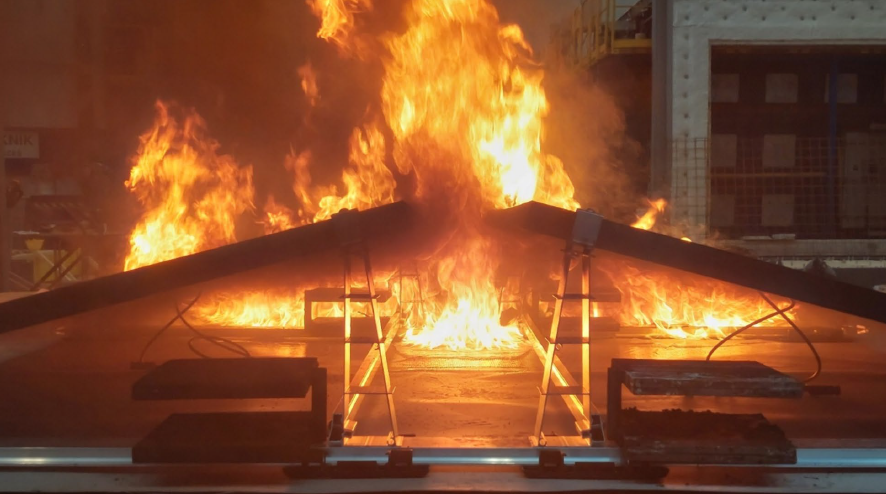The Slovenian National Building and Civil Engineering Institute (ZAZ) has introduced a fire test test that simulates a fire that starts on the roof membrane under a PV system. The researchers noted the importance of realistic construction methods, including factors such as anchors, adhesives, membrane welding and ballast use.
ZAG researchers have designed and published a new fire -waiting procedure (TP) for flat roofs with PV modules. Although most European and national tests focus on material and product tests, this TP is new because it contains all elements of the roof.
“We hope that this release can accelerate the process of setting up a harmonized fire test method for PV systems on flat roofs” PV -Magazine. “The document focuses on the need for building samples in a representative way and takes into account crucial elements such as the use of anchors or glue, welding the waterproof membranes, use of ballast or other specific elements.”
The new method uses a test deck made of non -foundable materials to support the roof sample with the PV system. Modules may not exceed 1.8 meters by 1.2 meters and can be tested in two configurations. The middle scale test uses a roof of 2 meters by 2 meters, while the large -scale test requires a roof of 4 meters by 4 meters. The report must contain details about the structure and the mitigation layer with a roof membrane.
Image: Slovenian National Building and Civil Engineering Institute
“The test method mimics a scenario in which a fire starts on the roof membrane under the PV system, making a malfunction in the PVelectric components or an external source of fire spread to that point (flying brands of adjacent buildings, wildfire),” ” The researchers said. “The source of ignition must create enough energy for the fire to spread outside the original area of the source of ignition, usually in a period of 10 ± 5 minutes.”
The fire source consists of a wooden cradle made of four layers of spruce wooden sticks, with two supporting sticks that are nailed underneath. This source of ignition has a theoretical heat emission of 16.56 kW and must be placed between the roof sample and the PV panel. To help inflammation, isopropyl alcohol must be cast on the woodcat. Forensic testing of the PV and roof materials must start 150 minutes after the combustion, allowing the materials to cool.
“Photos of the damage to the PV system (elements of the mounting system, the status of the PV module) and each layer must be taken,” the researchers explained. “Measurements of damaged material, damaged surface, burned material, openings appeared, the size/volume burnt/melted materials or the color different from the original, must be documented.”
The report must assess various changes, including inflammation of other elements, visible changes or distortion of specimen elements, material changes or distortion, enlarged openings between materials compared to their initial condition, damage due to additional elements such as ballast, anchors or glue, the fire, the fire, the fire, the fire spread and the size and depth of material damage.
This content is protected by copyright and may not be reused. If you want to work with us and reuse part of our content, please contact: editors@pv-magazine.com.
Popular content


